

Blessings from Ariake Sea
|
Surrounded by four prefectures including Saga Prefecture, the shallow Ariake Sea has many blessings to offer. Being Japan’s biggest tidal wetland, it accounts for about 40% of the country’s wetlands. Besides that, it has the largest tidal difference in Japan, with a difference as great as six metres when the tide flows out, revealing mudflats of approximately five to seven kilometres. You might imagine that Ariake Sea is not as clear as other seas due to the mudflats. However, contrary to that expectation, the mud mixes into the seawater with the ebb and flow of the tides, and in fact purifies the surrounding coastal waters by acting as a filter.
Due to the constant changes in the volume of water and salt concentration, many nutrients are carried over from the rivers to Ariake Sea. This has resulted in a unique ecosystem, with Ariake Sea being home to many different species of fauna that cannot be found elsewhere in Japan. It is also a stopover for migratory birds including endangered species such as the Saunders’s gull and the black-faced spoonbill. Therefore, it is little wonder that Ariake Sea is recognised by Ramsar Convention as an internationally important wetland. Some of the unusual fauna that reside in Ariake Sea include mudskippers (mutsugoro), fiddler crabs (shiomaneki), Japanese grenadier anchovy (etsu), black cow-tongue (kuroushinoshita), mud shrimps (majaku / anajako), and green eel goby (warasubo). While they may not look so pleasing to the eye, you may be surprised by how delicious they can taste. For example, the green eel goby, which looks rather grotesque, is suitable for miso soup. The bluespotted mudskipper is usually best served grilled or as sashimi. Another rare sight is the shichimenso, a type of halophyte, which grows along the shores of Ariake Sea. In autumn, it appears as if a red carpet has been unrolled across the coastline. It looks especially stunning when there is light-up. Moreover, Saga Prefecture is the largest producer of nori (dried seaweed) in Japan, and Ariake Sea plays an important role due to its great tidal differences. The seaweed is cultivated using a pole system, where many poles are placed in the sea, with nets for the seaweed hanging between them. During high tide, the seaweed is submerged and absorbs the rich nutrients. During low tide, the seaweed is exposed to the sun and the flavour is enhanced. In addition, fresh water from rivers flow to Ariake Sea, which in turn reduces the salt concentration. This contributes to the wonderful melt-in-the-mouth texture of the nori produced there. Naturally, the farmers have to be mindful of an array of other factors such as the change in water temperature and weather. However, it cannot be denied that the natural conditions of Ariake Sea are ideal and provide the perfect location for making nori. In fact, the well-known nori brand Yamamoto Noriten that also has a branch in Singapore, processes seaweed that grow in Ariake Sea to create delicious nori products. The mudflats of Ariake Sea also turn into an intense tournament ground in May, as the annual Kashima Gatalympics is held there. The first edition was successfully held in 1985 with the aim of revitalising regional development. Since then, the event has grown, and international students and overseas guest players can take part in it now. Numerous fun events are organised, including mud sumo and surfboard racing. Ariake Sea is indeed a treasure trove of blessings, and well-loved for many reasons. If you ever visit Saga Prefecture, do take the time to appreciate the many things that Ariake Sea has to offer. |
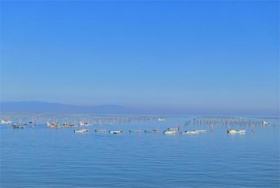 © photoAC 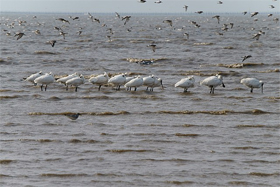 A flock of black-faced spoonbill on the mudflat, at high tide, Saga © Peka, CC BY-SA 4.0, via Wikimedia Commons 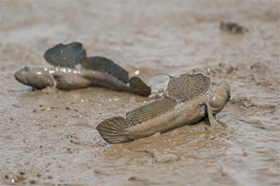 Mudskippers (mutsugoro) © photoAC 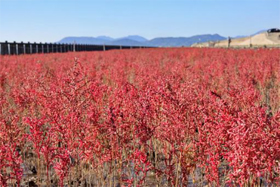 Shichimenso © photoAC 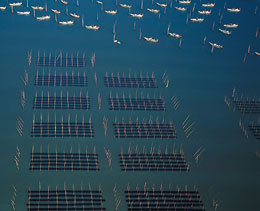 Seaweed cultivation in Ariake Sea © Watanabe Manabu 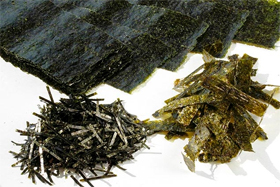 © Japan Up Close |
Resources
|
“Ariake Sea”. 2022. ANA. Accessed 16 September. https://www.ana.co.jp/en/sg/japan-travel-planner/saga/0000007.html. “Ariake Sea”. 2022. Saga Kashima City Tourism Association. Accessed 16 September. https://saga-kashima-kankou.com/en/spot/14061. “Ariake Sea: Japan’s Largest Tidal Wetlands”. 2018. Nippon.com. https://www.nippon.com/en/guide-to-japan/gu011021/. Yasuhara, Motomiya. 2015. “Nori Blessed by the Natural Resources of the Ariake Sea”. SHUN GATE. https://shun-gate.com/en/roots/roots_28/. “Let’s Know the Ariake Sea!”. 2016. Saga Prefecture. Accessed 16 September. https://www.pref.saga.lg.jp.e.zg.hp.transer.com/kids/list01964.html. “Saga Trip Genius”. 2022. Saga Prefectural Tourism Federation. Accessed 16 September. https://www.saga-tripgenius.com/. |
|
Japan Creative Centre 4 Nassim Road, Singapore 258372 +65 6737 0434 / jcc@sn.mofa.go.jp https://www.sg.emb-japan.go.jp/JCC/ Nearest parking at Orchard Hotel & Delphi Orchard |
 |